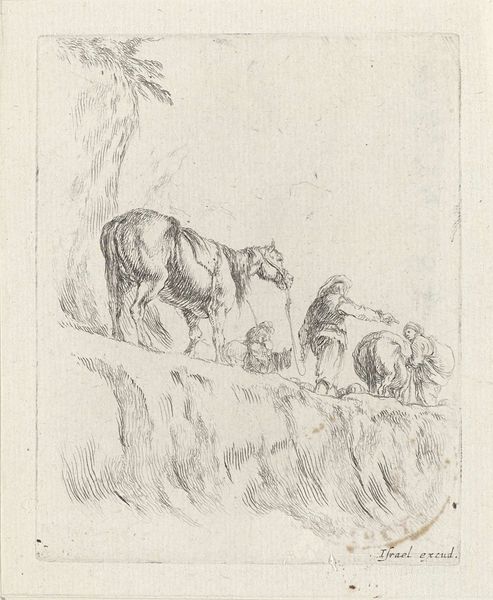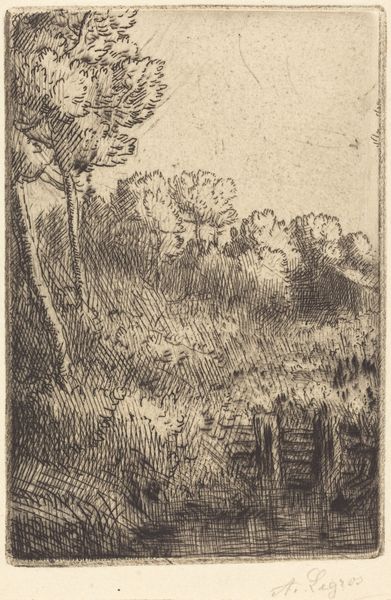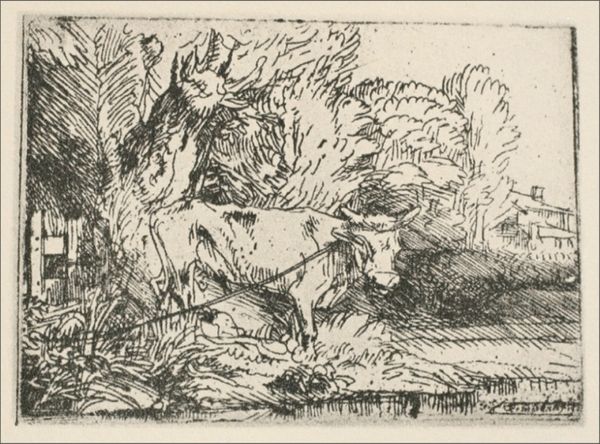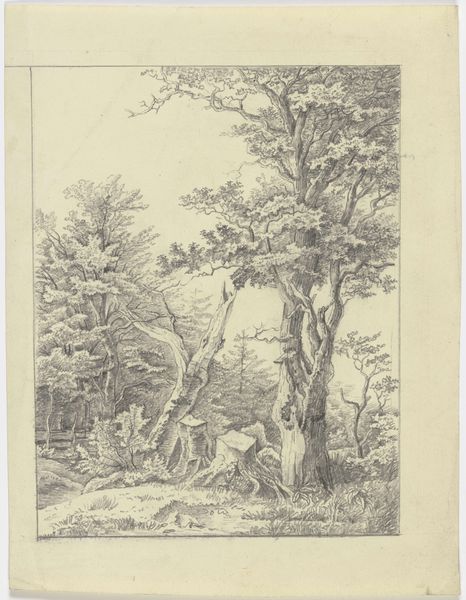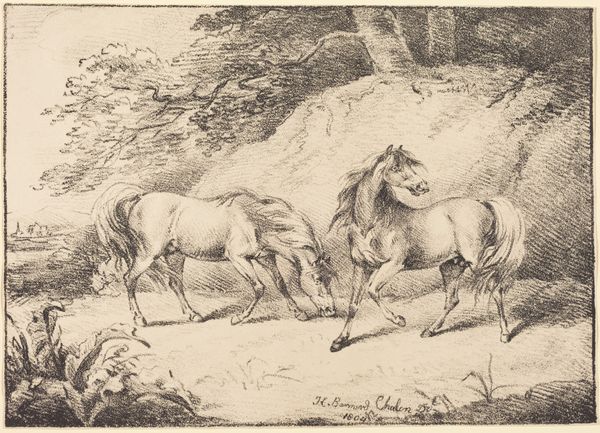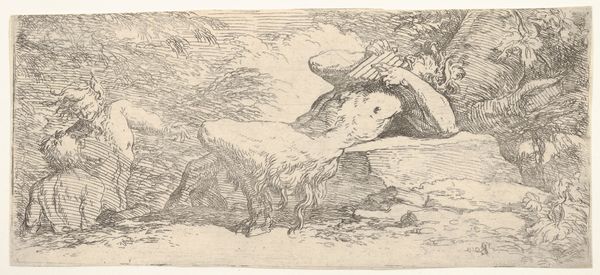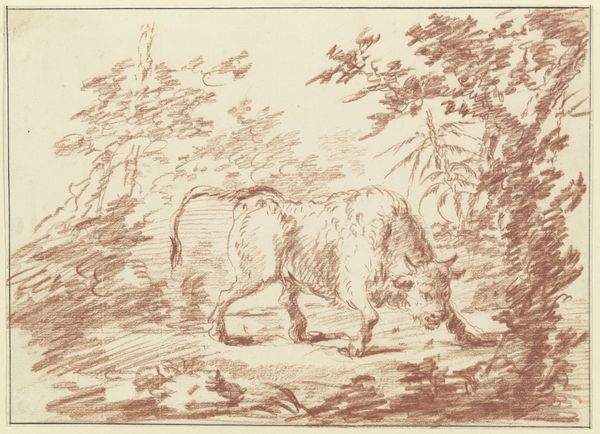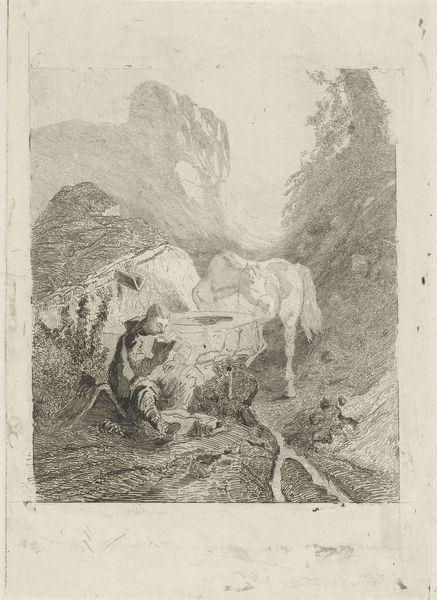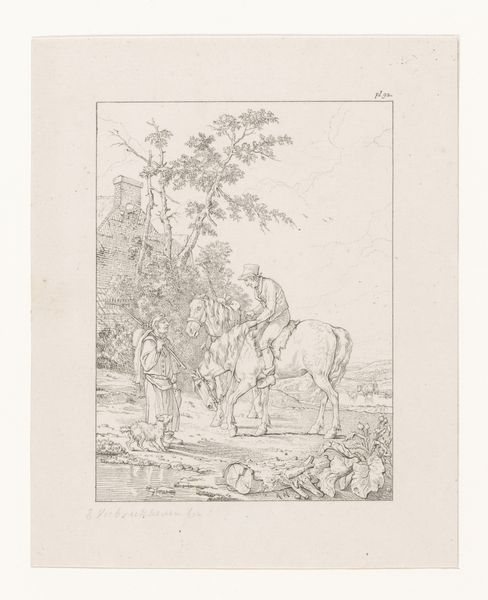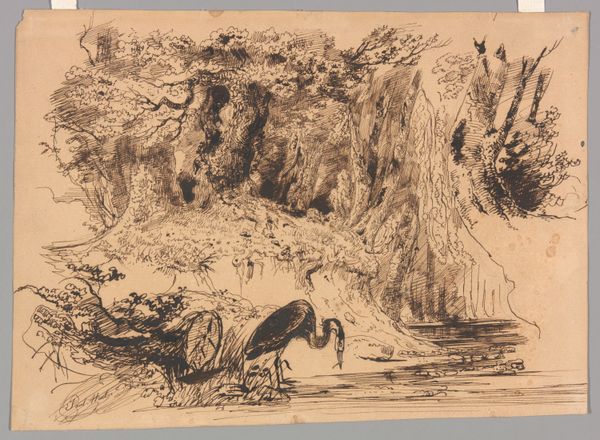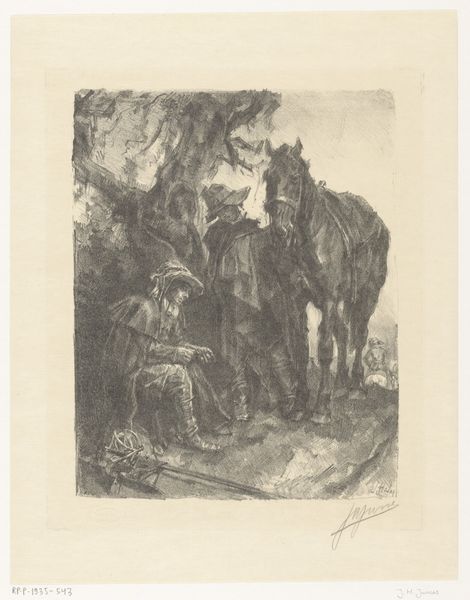
drawing, print, etching
#
drawing
# print
#
etching
#
landscape
#
realism
Copyright: National Gallery of Art: CC0 1.0
Editor: Here we have Alphonse Legros's etching, "Farm on the Hillside." Immediately I'm struck by its almost wistful tone. There's something so stark, yet peaceful, about the image. Curator: Stark is a good word. Legros was working in a period defined by the rise of industrial capitalism and deep class divides. Etchings like this harken back to agrarian life. Editor: Yes, the artist’s emphasis on line, created through the labor-intensive etching process, really gives us a sense of the density of the rural landscape. See how those parallel lines build volume in the trees? Curator: And that’s what’s key. Legros wasn’t simply depicting a farm; he was crafting a specific narrative. The etching itself, with its deep blacks and muted grays, becomes a commentary on rural poverty. The relationship between human labor and landscape feels especially pointed. Editor: Those mules burdened with some heavy load are not exactly romantic figures; their slumped posture tells another story. Curator: Precisely. This piece acts as a microcosm of labor inequities during the era. And Legros doesn’t shy away from it. He brings it front and center. This portrayal wasn’t unique for the time—it's part of the Realist movement, in dialogue with similar concerns raised in literature, theater, and beyond. The drawing underscores a call to recognize these workers and see their value, despite their low social status. Editor: But it is visually quite calm, which in a way, only reinforces the image of resigned people living their lives with such burdens. Look how carefully he renders the building nestled on the hill – remote yet firmly situated within the scene. Legros' use of this particular printmaking technique adds an almost somber touch to this humble subject. It makes me appreciate how art, through its materials and method of creation, conveys powerful messages. Curator: Agreed. There's such an immediacy, like capturing a moment and inviting us to not look away from issues of labor, social class, and environment. Editor: It's funny, I started just thinking about how the process informed my viewing. Now I see layers of socioeconomic meaning and Legros' attempt at visibility within these structures.
Comments
No comments
Be the first to comment and join the conversation on the ultimate creative platform.
